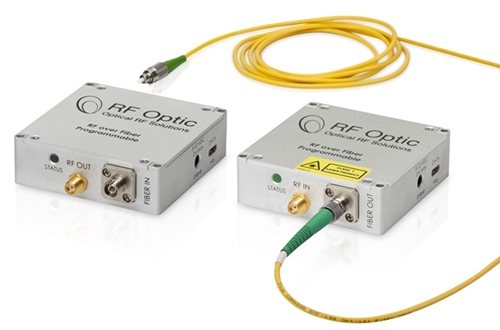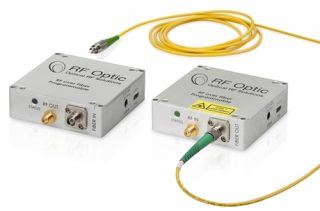At RFOptic, we listen to our customers to provide solutions that they want and need. So when we got requests for programmable phased-matched 6GHz solutions, it was a no-brainer for us to have our R&D department working on it. (To download the brochure, click here)
The palm-size analog RFoF modules are used to convert RF signals to optical signals to carry over long distances. The Tx unit using an optical transmitter, converts RF to Optical signal and the Rx unit converts back to the RF signal. The two units are connected through customer’s single-mode fiber.
RFOptic’s RF over Fiber modules (RFoF) are suitable for Phased Array Radar, Electronic Warfare, and interferometry applications. RFOptic CWDM 6.0GHz RFoF 4 link system is phase-matched up to ±6˚ up to 5.7GHz. Each of the four links is comprised of a Tx unit with LNA and an Rx unit, both with variable attenuators that enable adjustment of the Noise Figure, Input P1dB, and IP3 over a wide range of values. The LNA can be activated through an RFoF software tool allowing RF input power in the range of -100 dBm/1MHz for wideband applications, with low Noise Figure of 6 dB. The RFoF link has excellent gain flatness with 0.5dB gain tracking between different links.
A user-friendly RFoF software enables adjustment of the RF and Optical parameters, such as link gain, Noise Figure, P1dB, Optical power, LED indication, and module information, either locally or remotely. In addition, the phased-matched 4 links DDM has HTML/SNMP interface so management and monitoring can be done remotely
Furthermore, the RFoF link has full diagnostic capability, including Tx, Rx and complete link test (Optical and RF). These features save cost of test equipment and provide real-time diagnostic of any deployed link. The link gain calculator helps to calculate the link gain and the optical predicted parameters for RFOptic’s programmable RFoF family.
Phased-Matched 6GHz RFoF Module Key Features:
- Next generation RFoF system with significant performances improvement.
- Supports up to 6.0GHz
- Phased matched CWDM system of ±6 0 up to 5.7GHz
- Gain matched 6.0GHz full band of ±2.5 dB
- Better linearity, excellent gain flatness, and Tx, Rx and Link gain control
- Noise Figure down to 6 dB with LNA with MDS ~168 dB/Hz for very low incoming signals
- Internal Microcontroller allows RF and Optical control, enabled by software
- End-to-end diagnostics reduces installation and maintenance time, enabled by software
- Gain variation S21 (fo) of ±1 dB for 90° C variation, utilizing special algorithm
- Remote management by GUI installed on PC
- Impedances of 50 Ohms and 75 Ohm
To learn more, including the test results of the programmable 6.0 GHz RFoF phased matched system, download the datasheet or contact RFOptic at sales@rfoptic.customcode.co.il




 5G will be taking off with the 3.5 GHz band playing a key role
5G will be taking off with the 3.5 GHz band playing a key role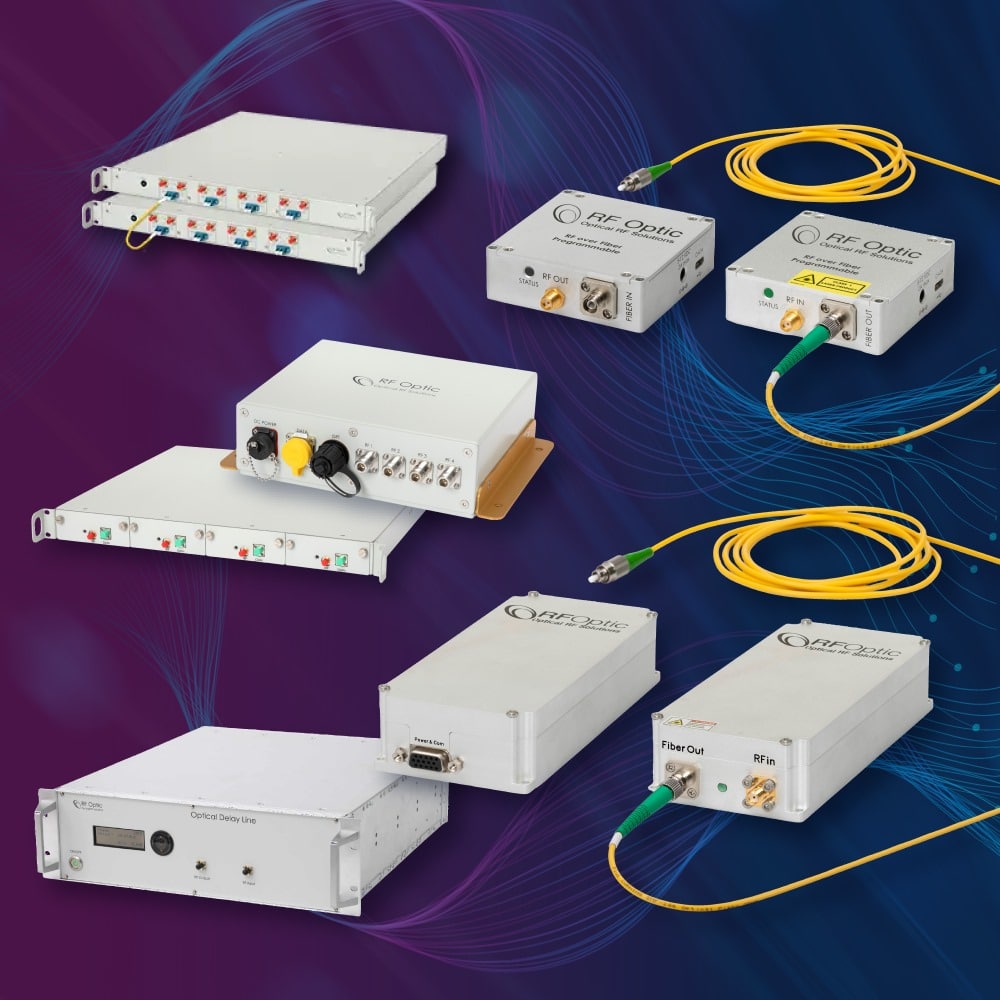
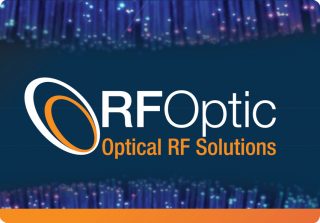 RFOptic
RFOptic
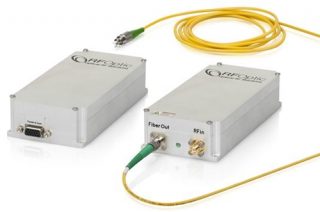 At the request of customers, RFOptic has now launched 12GHz, 18GHz, 20GHz, 30GHz, and 40GHz
At the request of customers, RFOptic has now launched 12GHz, 18GHz, 20GHz, 30GHz, and 40GHz 